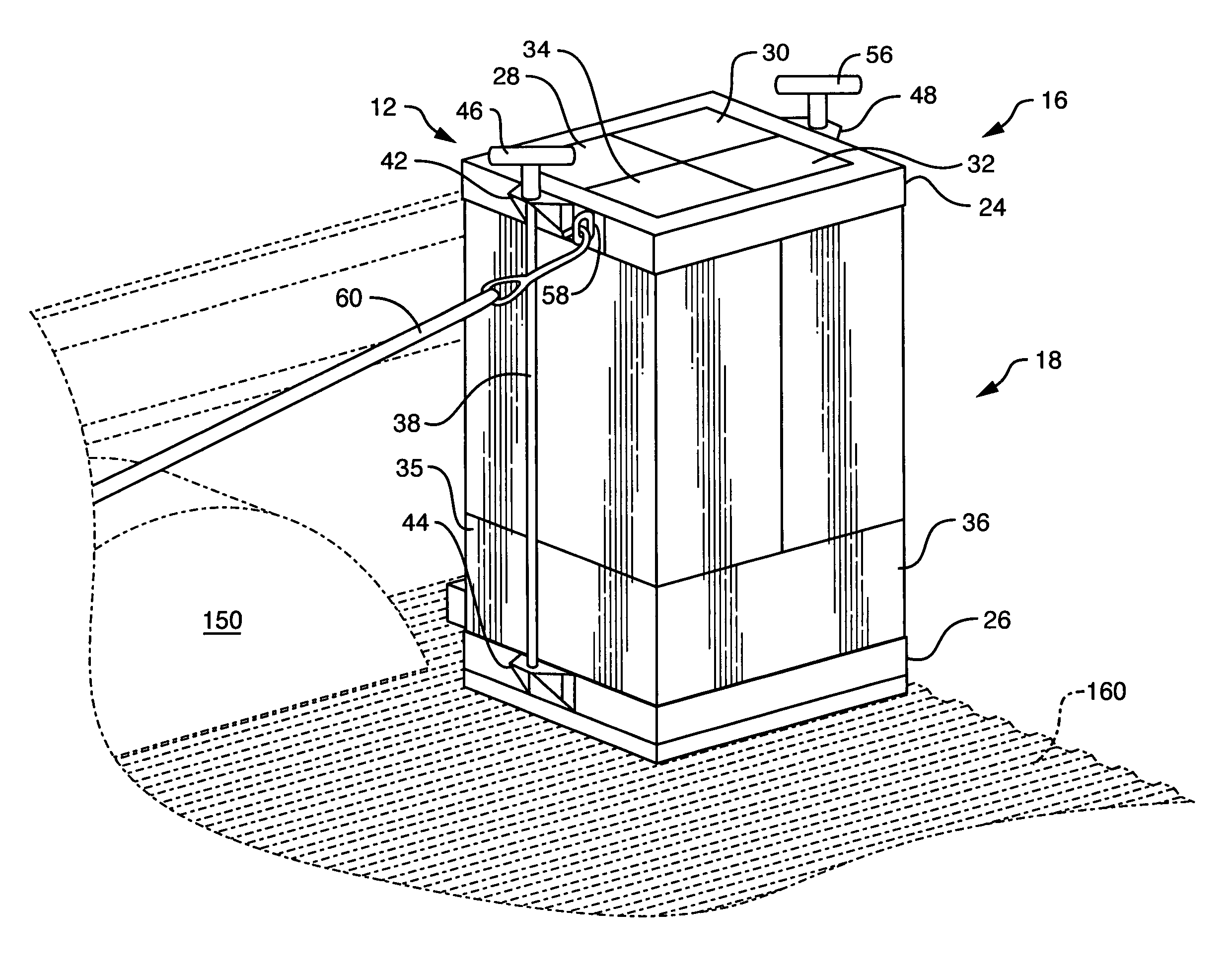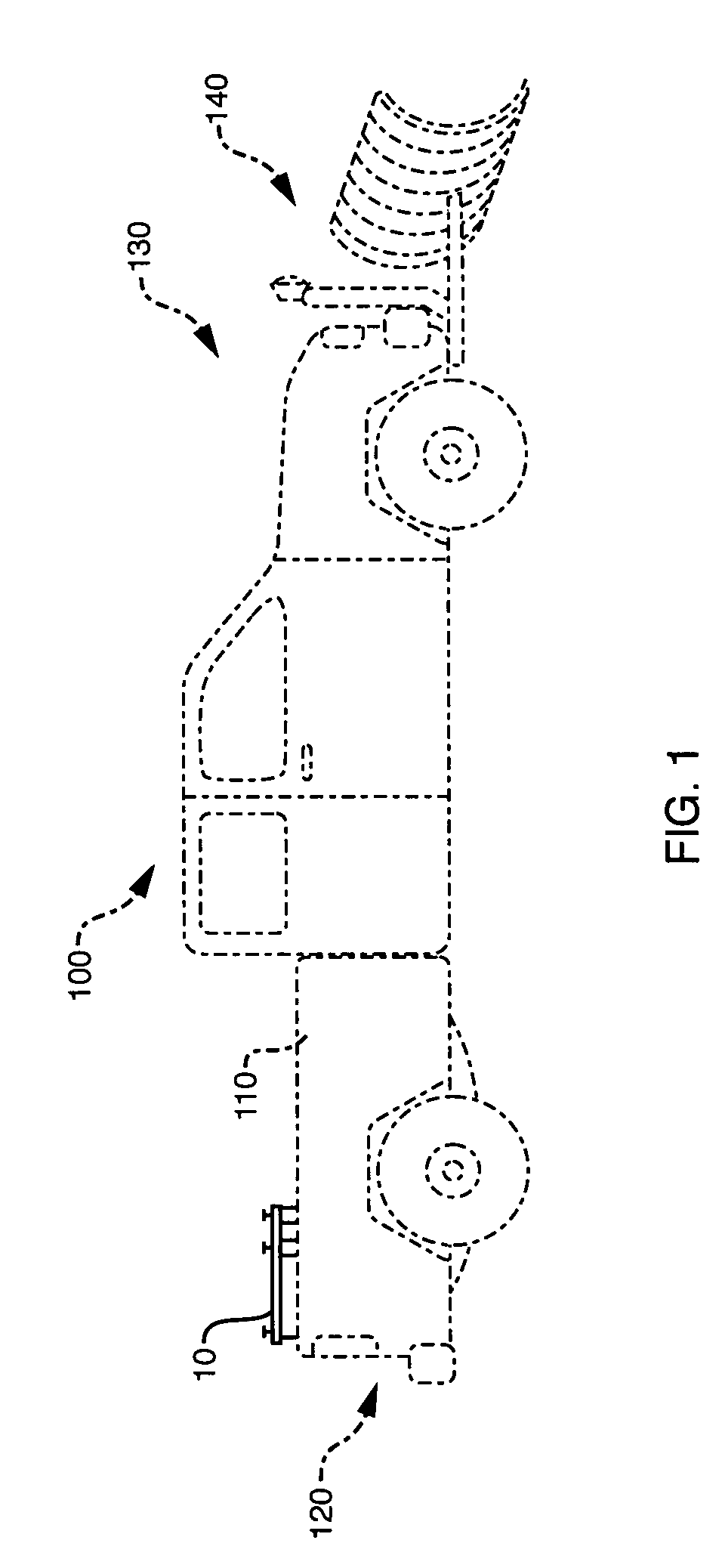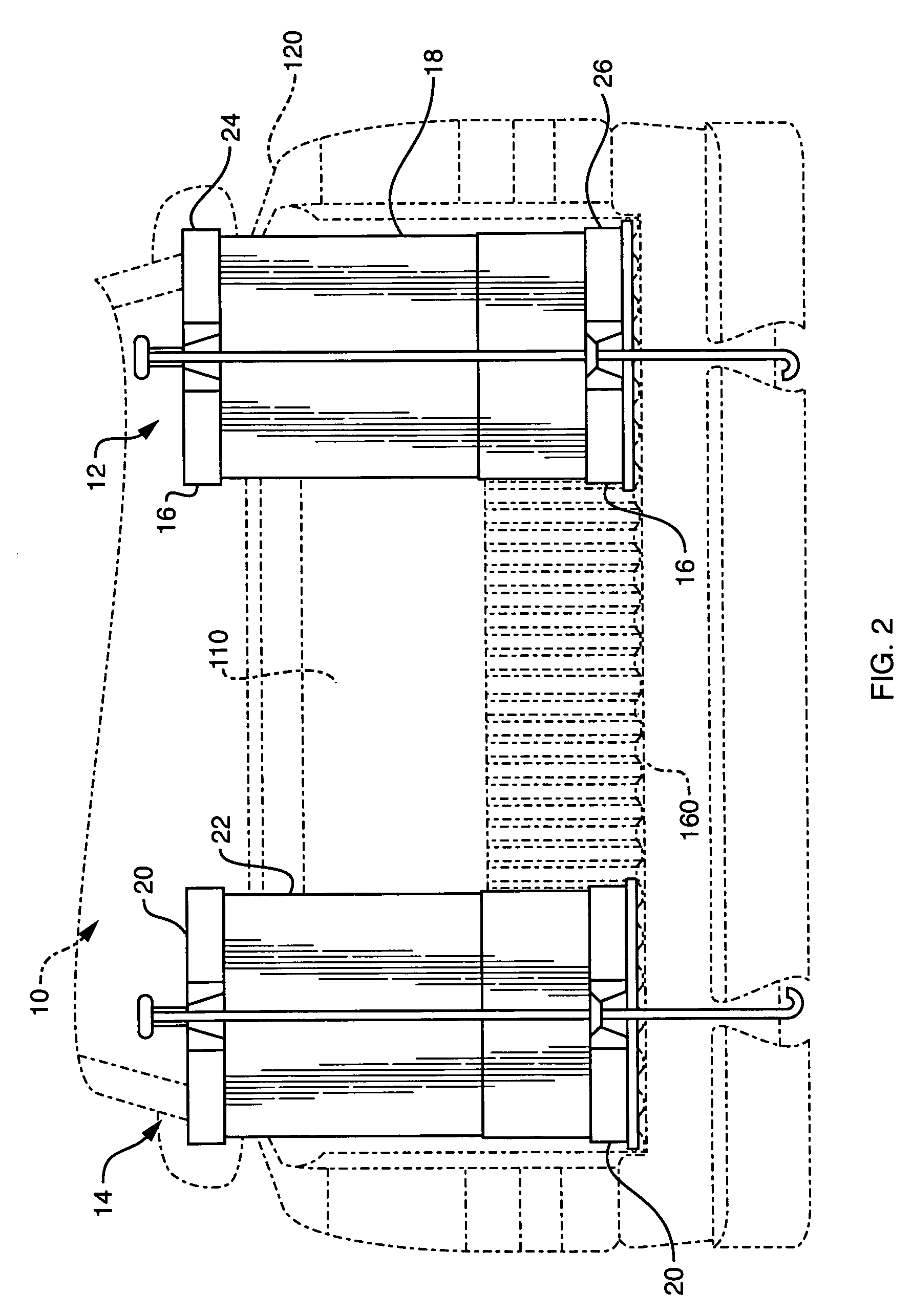Vehicle ballast system
a ballast system and vehicle technology, applied in the direction of tractors, cargo supporting/securing components, railway components, etc., can solve the problems of reducing the possibility of a reduction in traction at the rear end, a substantial portion of vehicles without sufficient load balancing to operate effectively under all conditions, and drivers tasked with snow removal operations, particularly those employing pickup trucks, often do not have sufficient ballast at the rear. , to achieve the effect of reducing the amount of truck bed spa
- Summary
- Abstract
- Description
- Claims
- Application Information
AI Technical Summary
Benefits of technology
Problems solved by technology
Method used
Image
Examples
Embodiment Construction
[0019]A vehicle ballast system 10 of the present invention is shown in FIGS. 1–5. In FIG. 1, the vehicle ballast system 10 is shown positioned in a storage compartment (truck bed 110) of a vehicle (truck 100). The vehicle ballast system 10 may be deployed in any of a plurality of locations within the truck bed 110. However, it is preferably positioned at a back end 120 of the truck 100 to counterbalance any opposing weight or load at a front end 130 of the truck, such as the truck's engine (not shown), or a snowplow 140. The vehicle ballast system 10 may vary in dimensions as a function of the available space in the storage compartment, the ballast needed, and / or the material available to provide the ballast portion of the system 10.
[0020]As illustrated in FIGS. 2–4, the vehicle ballast system 10 preferably includes a first ballast unit 12 and a second ballast unit 14. Alternatively, a single ballast unit may be employed, or more than two ballast units may be employed, dependent upo...
PUM
 Login to View More
Login to View More Abstract
Description
Claims
Application Information
 Login to View More
Login to View More - R&D
- Intellectual Property
- Life Sciences
- Materials
- Tech Scout
- Unparalleled Data Quality
- Higher Quality Content
- 60% Fewer Hallucinations
Browse by: Latest US Patents, China's latest patents, Technical Efficacy Thesaurus, Application Domain, Technology Topic, Popular Technical Reports.
© 2025 PatSnap. All rights reserved.Legal|Privacy policy|Modern Slavery Act Transparency Statement|Sitemap|About US| Contact US: help@patsnap.com



